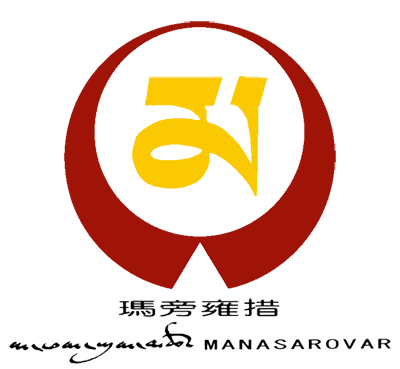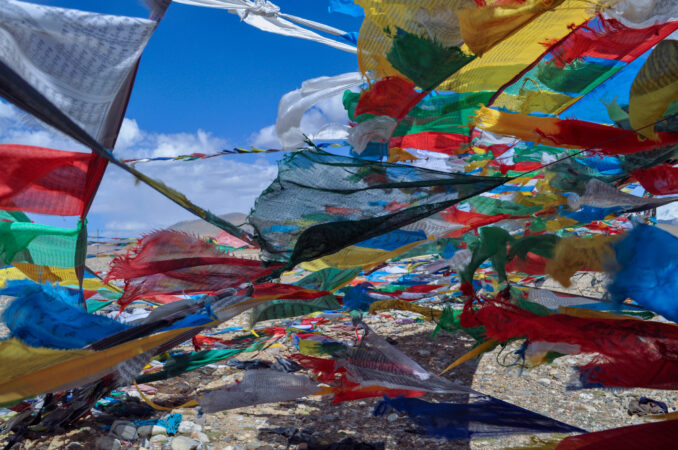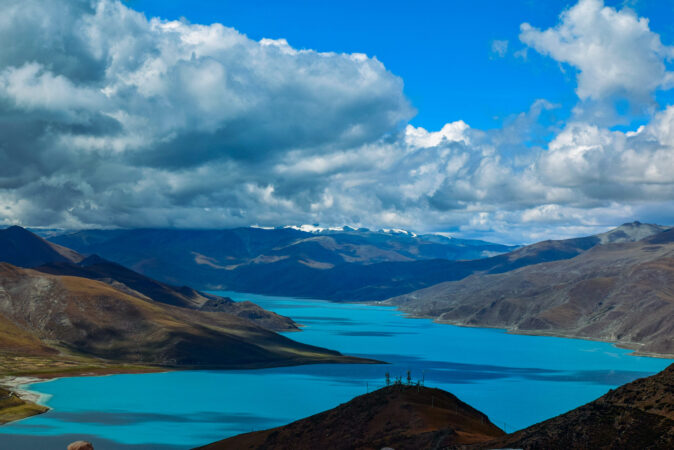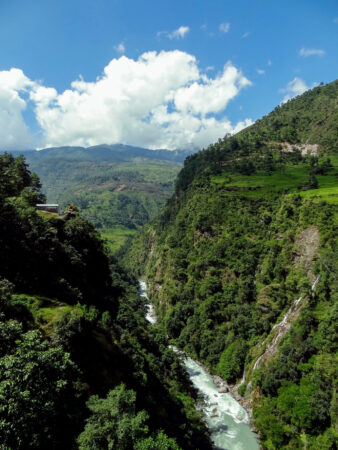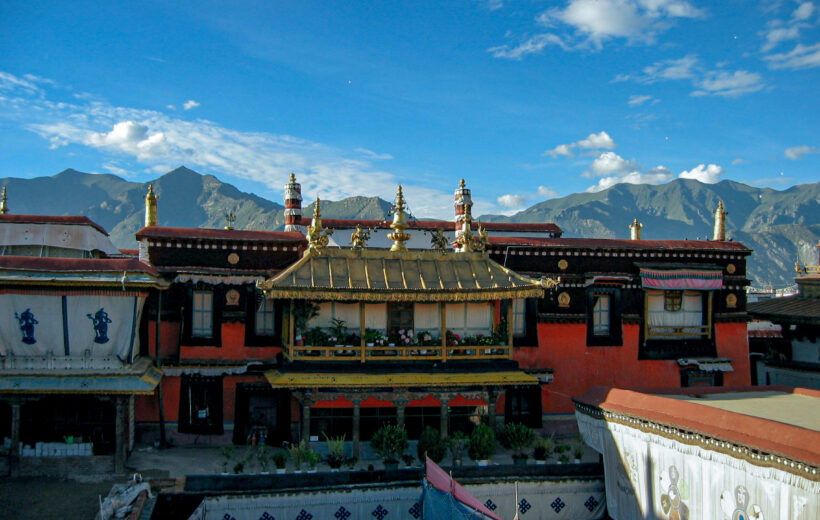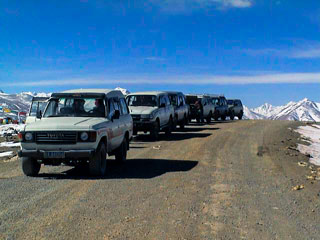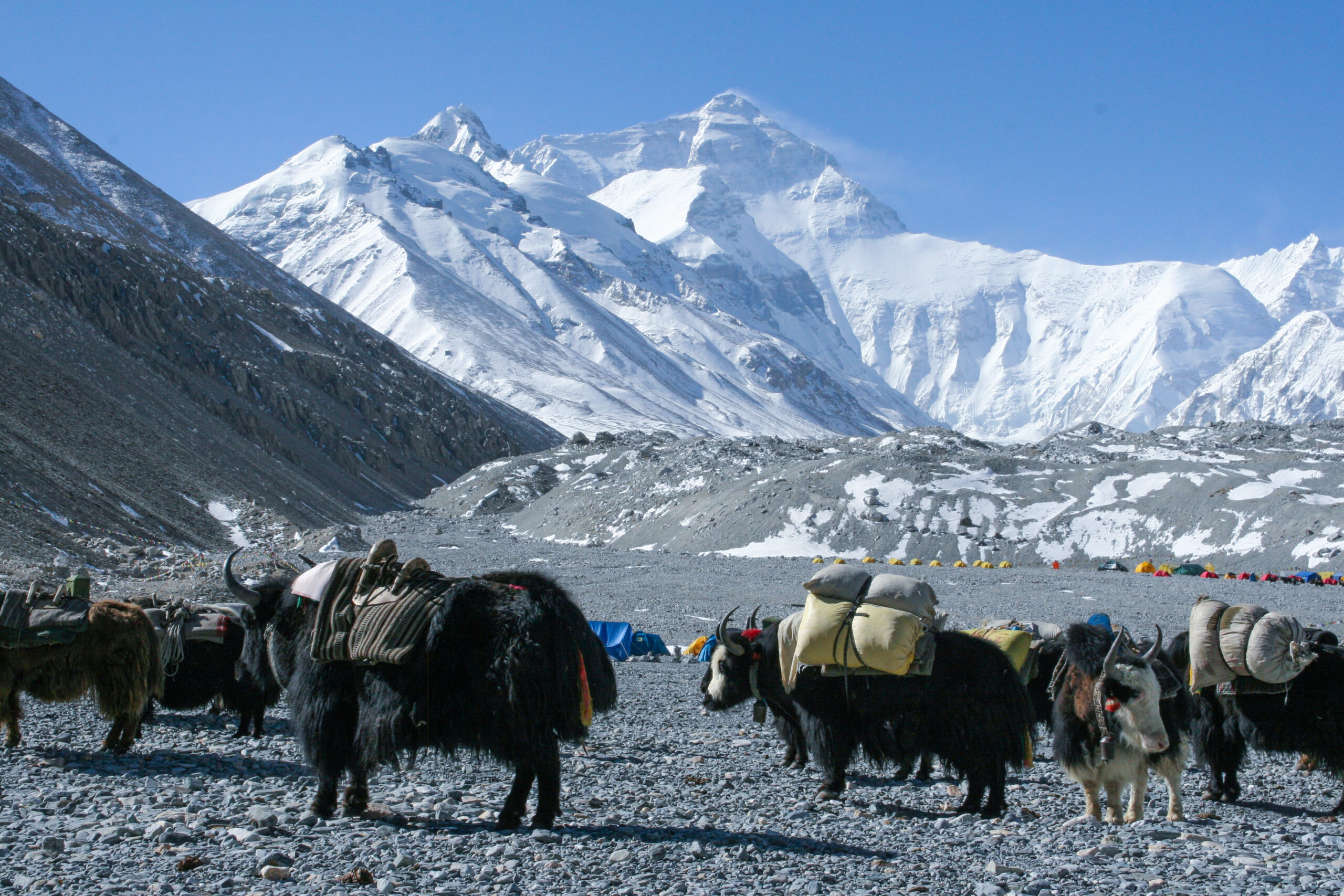Eastern Tibet: The Sacred Sites of Bon
Duration
What you will See & Do
East of Lhasa, the confluence of the Nyang chu and Yarlung Tsangpo (Brahmaputra) rivers is a particularly sanctified area with numerous sites of importance to the Bon tradition, including the Bon sacred mountain. From a base in Nyingchi you can explore a number of temples and scenic sites including the temples of Sigyal Gonchen & Takste Yundrunling, Chu Jowo and Lamaling.
Beyond Nyingchi the road climbs to cross the Serkhym-la (4515m); then skirts the great mountains of Namche Barwa (7782m) and Gyala Pelri (7294m) with the Yarlung Tsangpo (Brahmaputra) passing between them before its great curve south into India. The views are spectacular!
Pass the stunning highland forests and pastures around Lunang and Tangme to Pomi - backed by snow-capped mountains this is some of the most fertile land of Tibet and attracts swarms of birds in summer.
Itinerary
Day 1: Arrive at Nyingchi Airport
Transfer to Nyinchi to your hotel. Depending on flight arrival time, you may start some easy sightseeing today.
Day 2: Nyingchi area - visits depending on your personal interests including temples, mountain viewpoints, villages ...
The area is scenically stunning – you will see Bayi Pelri, a holy mountain is associated with the epic battles of Guru Rinpoche against an array of evil forces. Here too is Bonri, the sacred mountain of the Bon. A cypress grove includes a tree believed to be 2500 years old – the oldest tree in China and revered by Bonpo especially.
Lamaling (Zangdok Pelri) was originally main seat of the head of the Nyingmapa until his death in 1987 it was later destroyed. The reconstruction is an exquisite temple & garden complex displaying the best metal casting of Chamdo artisans.
Nearby is Buchu Sergyi The oldest Buddhist shrine in Kongpo and one of the 4 border taming temples built by Songsten Gampo in the C7th.
Chu Jowo Temple contains a much-revered relief image of Jowo Rimpoche in the guise of 4-armed Avalokiteshvara. Jowo Rinpoche is said to have vanished into the stone before returning to Lhasa after appearing in the Brahmaputra to honour a pledge to a devout shoemaker.
Day 3: drive from Nyingchi to Pomi via the Serkhyim La & Lunang Forest.
Start out along section of road you will not forget in a hurry, part of the South Sichuan-Tibet Highway. Climb the seemingly endless switchbacks to the Serkhyim La (4582m) around the side of Bonri where you may see pilgrims ending their kora. This is a forested area and a mass of colourful flowers in summer.
You will also have magnificent views of Namche Barwa (7756m) and Gyala Pelri (7151m) as you descend towards Lunang, Tibet’s largest forest. Further east, following the Parlung Tsangpo as other smaller rivers join it, stop at Bakha Monastery, residence of the Bakha tulku.
Day 4: to Rawok – visit Rawok Lake & Midui Glacier
Follow the Parlung Tsangpo river 130kms to Ngan Tso & Rawok Tso. The lakes are surrounded by lovely woods, a chorten and small temple, hot springs and one of the most beautiful glaciers in China.
Day 5: After sunrise at Rawok Lake return to Bayi
A full day’s drive, but the scenery is every bit as spectacular on the second look.
Day 6: Basum Tso
Following the Nyang Chu - longest tributary of the Yarlung Tsangpo back toward the west. Basum Tso is reputedly the abode of King Gesar’s spirit and is an important pilgrimage site. Visit the small temple on Tsodzong Island, birthplace of Sangye Linpa (discoverer of hidden texts) and with earlier associations with Padmasambhava. Follow the pilgrim circuit around the island and enjoy the scenery and perhaps take a boat ride on the lake.
Day 7: to Lhasa via Ganden
Tsongkhapa founded the first monastery of the Gelukpa order, Ganden in 1409 or 1417 (sources differ). It has remained the main seat of the Gelugpa. Of all Tibet’s monasteries Ganden suffered most at the hands of the Red Guards; today it is being revitalized and rebuilt and its setting high on a ridge overlooking the Kyi Chu Valley is spectacular. The high kora takes approximately 1½ hours.
Arrive in Lhasa in the late afternoon.
Day 8: Lhasa sightseeing - visiting Drepung, Nechung & Sera
The university monastery of Drepung is one of the three most important Gelugpa monasteries in Tibet and was founded in the 15th century. It houses a large collection of Buddhist scriptures, artifacts, and artwork, and is known for its beautiful architecture and peaceful atmosphere.
Nechung is a small temple located nearby and is the home of the Nechung Oracle, a medium who is believed to be possessed by a deity and who offers spiritual advice and guidance. He is the personal oracle of the Dalai Lamas.
You may visit the Norbulinka, Summer Palace of the Dalai Lamas instead of Nechung if you prefer or include both for a very full day.
Sera is another important Gelug monastery located on the norther foothills of Lhasa and is known for its vibrant debating culture. Monks at Sera engage in lively philosophical debates on Buddhist doctrine, which can be fascinating to observe.
Day 9: Lhasa sightseeing - visiting Potala Palace, Jokhang and the Barkhor
The Potala Palace is a massive fortress-like structure that dominates the Lhasa skyline. It was the winter palace of the Dalai Lamas and contains a complex of chapels, halls and rooms that are richly decorated with frescoes, carvings and sculptures. Explore the many levels of the palace, including the Red Palace and the White Palace, and admire the stunning views of the city from the rooftop.
The Jokhang Temple is considered the spiritual heart of Tibet, located in the heart of Lhasa. It is one of the oldest and most revered temples in Tibet and is known for its impressive architecture and religious artifacts. Amid the many shrines and statues of Buddha witness the daily rituals and offerings made by devotees.
The Barkhor is a bustling marketplace and pilgrimage route that circles the Jokhang Temple. It's one of the oldest and most vibrant areas of Lhasa and is a great place to buy traditional Tibetan goods such as prayer flags, incense and handicrafts. You may also ask your guide to visit a nunnery, Tibetan Medical Institute, art workshops ...
Day 10: departure
Transfer to the airport or station for your departure.
OR Continue with a central Tibet loop visiting Yamdrok Lake, Gyantse & Shigatse - or longer options to include Mount Everest; returning to Lhasa or continuing overland to Kathmandu.
